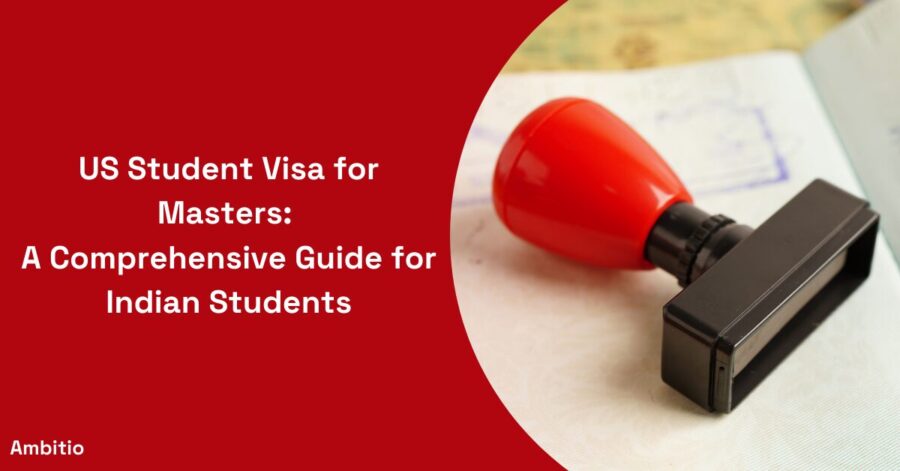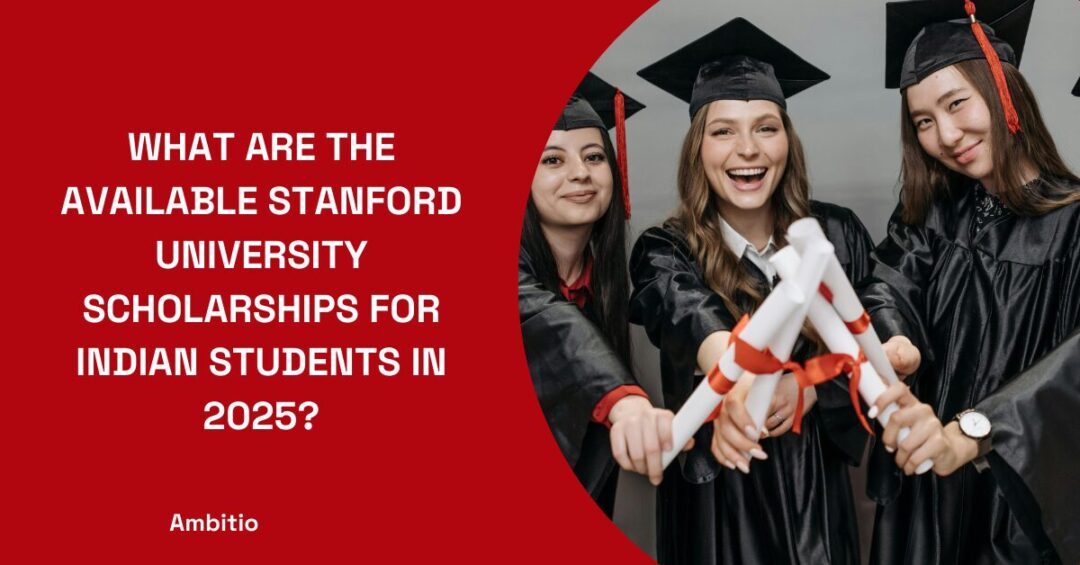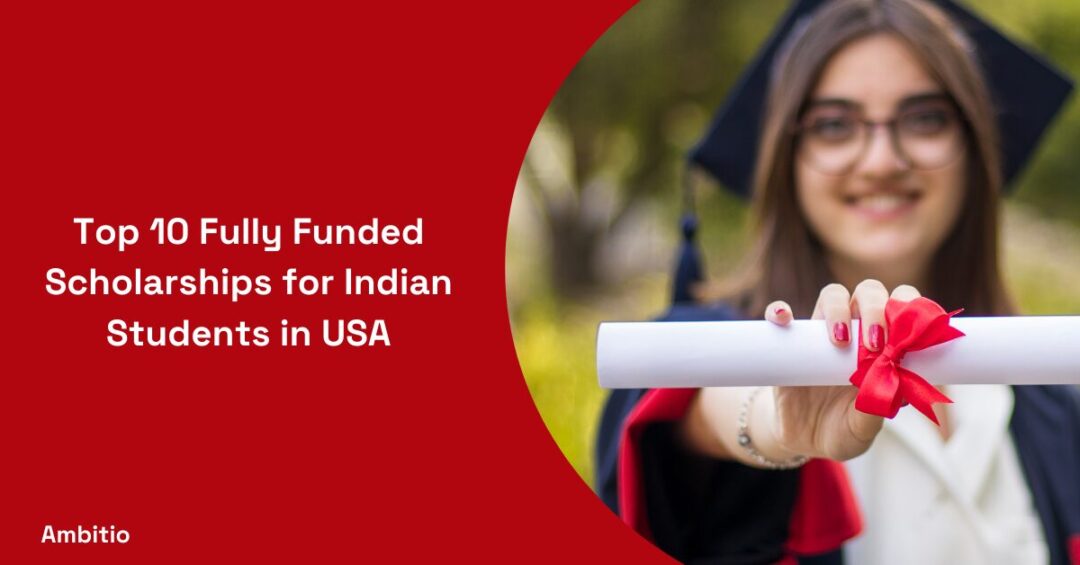13 December 2024
5 minutes read
US Student Visa for Masters: A Comprehensive Guide for Indian Students

Introduction
Every year, thousands of Indian students venture to the United States in pursuit of higher education. The USA, known for its renowned universities and vibrant academic environment, has become the dreamland for many looking for international exposure and quality education.
However, before embarking on this journey, understanding the intricacies of the visa application process becomes paramount. This guide delves deep into the US student visa requirements, specifically tailored for Indian students.
Understanding the USA Study Visa Requirements for Indian Students
An Overview of the Types of Student Visas
The F1 Visa – Academic Studies and More
The F1 Visa, the most sought-after among Indian students, caters to those pursuing academic courses. Whether it’s undergrad, grad, or doctoral studies, this visa covers it all.
Most US universities recommend this visa type for their international students. Apart from studying, the visa also provides some leeway for on-campus employment, thus offering a bit of earning while learning.
The M1 Visa – Vocational and Non-Academic Training
M1 Visa is specifically designed for students eyeing vocational or non-academic courses in the US. This could include mechanical studies, medical training, or other technical courses. While the course structure might differ from conventional academic programs, the visa’s weight remains as significant.
The J-1 Visa – A Blend of Study and Practical Training
This visa type is meant for students who require on-ground practical training, not available in their home country. It’s an exchange visitor visa and usually covers scholars, interns, and even doctors. The primary objective is to promote exchange, allowing students to garner skills in the US and then utilize them in their homeland.
Decoding the Application Process
Initiating the Application – The Crucial First Steps
- Secure acceptance from a SEVP-approved school.
- Pay the SEVIS fee to support the student monitoring system.
DS-160 and Application Fees – Moving Ahead
- Complete the DS-160 form online, mandatory for non-immigrant visa applicants.
- Pay the application fee (typically around $160 for F1 Visa).
The Visa Interview – Preparation is Key
- Prepare thoroughly for the visa interview.
- Have essential documents ready: passport, DS-160 confirmation, SEVIS payment proof, and school-specific documents.
- Clarify course details and post-study plans during the interview.
Post-interview and Visa Approval
- Wait for additional processing after the interview.
- If approved, pay the visa issuance fee (varies by visa type and country).
These steps outline the process of applying for a student visa in the USA.
Making the Most of Your US Student Visa
On-Campus Employment Opportunities and Limitations
F-1 visa holders often explore employment opportunities during their studies. While on-campus employment is permitted, there are restrictions. Students can only work up to 20 hours per week during academic sessions and full-time during breaks.
Off-Campus Employment – CPT and OPT
Curricular Practical Training (CPT) and Optional Practical Training (OPT) are avenues for off-campus employment. CPT allows students to work in their field of study, making internships or part-time jobs feasible. OPT, on the other hand, can be used both during and after course completion, giving students the flexibility to gain practical experience.
Life in the US – Adapting and Thriving
Building a Network – The International Student Community
Establishing a robust network is an integral part of any student’s journey abroad. In the US, where campuses are bustling with students from all corners of the globe, there’s an incredible opportunity to build lasting connections. Tapping into the international student community can be both a source of comfort and a catalyst for professional growth.
The Importance of Networking
Networking is not just about professional advancement; it’s about forming relationships, understanding diverse cultures, and creating a support system. As an international student:
- You’ll find solace in shared experiences.
- You can lean on this community during moments of homesickness or cultural adjustment.
- This network can provide insights into academic resources, job opportunities, or internship openings.
- You can celebrate international festivals together, creating a home away from home.
Campus Resources for International Students
Most US universities prioritize their international students, offering a range of resources:
- International Student Office: Almost every university has one. They regularly organize events, workshops, and orientation programs to help students integrate and network.
- Student Clubs and Organizations: Joining clubs based on nationality, interests, or academic focus is a great way to meet like-minded individuals.
- Alumni Networks: Engaging with alumni can offer insights into potential career paths, job openings, and industry trends.
Leveraging Social Media and Digital Platforms
In today’s digital age, networking isn’t confined to physical boundaries:
- Platforms like LinkedIn can help you connect with professionals in your field of study.
- University-specific apps or forums often have threads and groups for international students.
- Social media platforms like Facebook and Instagram have numerous groups centered around student communities and interests.
Attending Conferences, Seminars, and Workshops
Regularly attending academic and industry-specific events can help you:
- Gain knowledge and insights about the latest trends in your field.
- Connect with professionals, professors, and other students.
- Understand the practical applications of your academic knowledge.
Mutual Growth and Support
Networking is a two-way street:
- While you seek advice and insights, always be ready to offer help when someone else needs it.
- Share resources, study material, or job openings you come across.
- Engage in group studies, discussions, or just casual meet-ups to deepen these connections.
Respect and Cultural Sensitivity
As you connect with diverse groups:
- Always be respectful and open-minded.
- Understand that cultural nuances may vary, and what’s acceptable in one culture might not be in another.
- Foster an environment of mutual respect, where everyone feels valued and heard.
Building a network amidst the international student community is a blend of effort, openness, and mutual respect. As you navigate the academic rigors of your course, this network will become your anchor, offering support, camaraderie, and a plethora of opportunities. Remember, the bonds you forge during your student years often last a lifetime. Make the most of them!
Understanding American Culture and Etiquettes
Venturing into the vast expanse of American society requires more than just a student visa; it demands a nuanced understanding of the nation’s culture and etiquette.
American culture, a rich tapestry woven with threads from every corner of the world, offers international students an enriching experience and myriad learning opportunities.
The Melting Pot: Diversity in the American Society
- USA is known as a “melting pot” due to its diverse cultures.
- Celebrate diversity in communities, food, festivals, languages, and daily life.
- Embrace multiculturalism to enrich your experience and broaden your worldview.
Individualism and Independence
- American culture emphasizes individualism and self-reliance.
- Education encourages critical thinking, personal opinions, and innovation.
- Voice your thoughts, ask questions, and be proactive as a student.
Punctuality and Professionalism
- Time is highly valued; punctuality is a sign of respect.
- Be on time for classes, meetings, and social events.
- Communicate in advance if running late or rescheduling.
Direct Communication
- Americans favor direct, clear, and succinct communication.
- Be straightforward in academic and professional interactions.
- Directness is not necessarily rude; it’s about clarity.
Tipping Etiquette
- Tipping is common in service industries (15-20% of the total bill).
- Understand tipping etiquette to avoid social mistakes as a student.
Personal Space and Boundaries
- Respect personal space; maintain appropriate distance.
- Avoid excessive physical contact with acquaintances or strangers.
- Respect privacy; don’t ask overly personal questions without consent.
Regional Differences
- The US has regional cultural variations.
- Be observant of regional etiquettes and norms as you travel and interact.
- Recognize differences in West Coast, East Coast, Southern, Midwestern, and New England cultures.
Understanding American culture and etiquette is a continuous journey, filled with observations, interactions, and learning. As an international student, immersing yourself in these nuances will not only help you adapt but also deeply enrich your study-abroad experience.
Conclusion
The journey from contemplating studying in the US to finally attending your dream university might seem tedious. Yet, with proper guidance, clarity, and a bit of patience, the process becomes manageable. This guide serves as a stepping stone, ensuring Indian students have all the information at their fingertips.
FAQs
What’s the difference between F1 and M1 Visas?
F1 is for academic courses while M1 is for vocational or non-academic programs.
How long does the visa application process take?
It varies but usually takes a few weeks post the interview.
Can I change my university after arriving in the US?
Yes, but you’ll need to inform both your current institution and the USCIS.
Is there a chance of visa rejection?
Yes, every application is evaluated independently, and there’s always a chance of rejection.
Can I apply for a work visa after my studies?
Yes, students often transition to work visas like H1B post their studies.

You can study at top universities worldwide!
Get expert tips and tricks to get into top universities with a free expert session.
Book Your Free 30-Minute Session Now! Book a call now




























